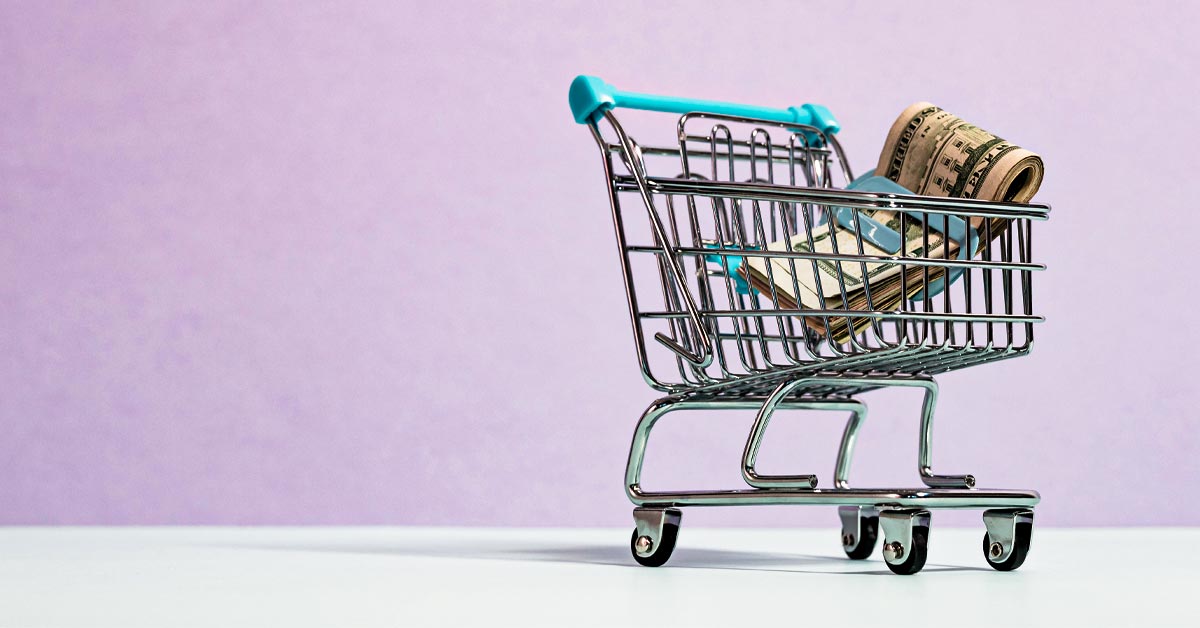Check these tried-and-tested eBay selling tips if you want to become a powerseller.
- Inbox Dollars - Get paid to check your email. $5 bonus just for signing up!
- Survey Junkie - The #1 survey site that doesn't suck. Short surveys, high payouts, simply the best.
- Nielsen - Download their app and get paid $50!
They’ve been tried and tested by many successful eBay sellers from the past and now. And they work even in a super-crowded eBay market, regardless of your niche.
10 eBay Selling Tips You Should Follow
Achieving success as an eBay seller won’t be overnight, but if you follow these 10 tips religiously, your journey to powerseller status could be on the right track.
1. Give Buyers a good first impression with your profile
If you’re new to eBay, don’t skip filling out your profile.
Buyers can understand that your store has no feedback yet, especially if they see your join date as recent.
But if you don’t put the effort into writing an introduction, linking your website, adding a logo and providing as much information as possible, your buyer confidence in your store wouldn’t improve.
The easiest way to get a rating is to buy stuff from other people.
Because you get ratings as both a buyer and a seller, buying from established shops can earn you feedback that proves you’re a real person with a physical address.
If you’re selling as a person, attach a clear and updated photo of yourself.
If you’re selling as a company, upload a company logo instead.
2. Research What items to Sell
First, in order to remain on eBay’s good side (and be allowed to sell), you have to know what stuff NOT TO SELL.
ITEMS NOT TO SELL: These include alcohol, coins, paper money, and stamps, drugs or drug paraphernalia, electronic surveillance and circumvention equipment, firearms and other weapons, gambling-related items (lottery tickets or slot machines), tobacco, wildlife-based products, and items issued by governments, police, or military
ITEMS TO SELL: For new entrepreneurs who do not have a product to sell yet, you can use the eBay platform to decide what to sell. Here are some ways to research your niche:
- Use “Marketplace Research” Tool: Free for all eBay users, this tool lets you access completed listings to review the final price on items similar to those you want to sell or see what products are being sold in great demand.
- Spy “Trending” Products: eBay also showcases items that are currently trending. You can even access “most-watched” items and see what products you’d like to invest in.
- Seasonal: You don’t have to stick to just one niche – you can sell items based on the coming season, holiday or events. For example, Halloween phone cases, Christmas decor, Valentine’s Day gadgets, and so on. Out of all the eBay selling tips, this one you should consider especially if you have a small budget.
- Go for ever-green items: Some products never go out of fashion, so you can decide to sell them anytime. These include watches, video games, smartphones, mp3 players, audio headphones, shoes, game consoles, guitars, women’s handbags, laptops, and computers, among others.
3. Learn SEO Basics and incorporate them into your ad
Don’t be afraid of SEO (search engine optimization).
Anyone who has ever Google-searched a term has in one way or another participated in SEO. You just don’t know it.
When you begin working on an eBay item listing, make sure that your listing description includes keywords or keyphrases (these are terms that customers use to search for what they need on the eBay search bar).
You can go about this as simple or as complicated as you want.
- Simple: Think like a buyer. If you’re looking for Jordans and you have a specific model in mind (for example: Air Jordan XX8), you just enter the keyword “Air Jordan” and add the model such as “XX8”. Now compile all reiterations of this keyphrase, such as “Air Jordan XX8 size 10”, “Air Jordan XX8 preloved”, and so on.
- Complicated: There are free and paid keyword research tools online you can use. No more brainstorming (you just enter the main keyword, press a button and you’ll be given a long list of keywords to pick from). It may sound easy, but there is still work involved in this method because keyword lists can be very long and overwhelming.
This is one of the most important eBay selling tips you can learn.
And it doesn’t end with listing descriptions.
You can use it to name the images you upload for your listing, the title of your listing, item FAQs, and even your store profile (if you’re focused on selling just one niche).
4. Take Good Photos – they attract more buyers than grainy, blurry ones.
This is a simple, yet overlooked factor in making better eBay listings.
Buyers want to see what they’re going to buy, what’s included in the package you’re selling, and the condition of the item (if it’s a used item).
As such, uploading good photos will add credibility to you as a seller and will attract more buyers/bidders organically.
No joke. Here are the fastest ways to make easy money online. Click here to see how.
Here are some useful, picture-related eBay selling tips:
- You can use your smartphone. Just make sure to clean the lens first, find macro mode (if your phone has it), and autofocus before taking a picture.
- Use the sun or alternative lighting. If you can take pictures of the item in natural daylight, do it! The sun is always the best lighting for photography. If you can’t rely on natural daylight, then find a desk lamp or other alternative lighting to remove shadows from your photos.
- Keep it simple. Use a plain, white background for most of your photos. If the item you’re showcasing is colored white, then go for a darker color (plain preferably) like blue or black.
- Show flaws. If you’re selling a used item, make sure to photograph any flaws and issues the item has. The buyer will ask for this anyway (assuming you indicate the flaw in your description). As a general rule, be upfront about the issues to earn credibility and your buyer’s trust. Never hide flaws from buyers – only scammers do that.
Each eBay listing allows you to upload up to 12 photos for FREE.
Take advantage of this feature and try to give potential buyers different angles/views of the item.
And save your photos with proper dimensions (eBay recommends 1600×1600 pixels, but you can also do 500×500 pixels or 9000×9000 pixels).
Go to Instagram and study how brands arrange their products.
The clickthrough rates of staged photos are as high as 10% when compared to stock images, so the effort will all be worth it.
5. Price Your ‘Items for Sale’ Appropriately
Pricing your items is important not only to attract customers but also to ensure you earn something from the sale.
When you’re deciding on the amount to list your item, follow these guidelines:
- Check the price of completed eBay listings. This helps you estimate the amount to sell an item for because it shows how much other people paid for a similar (or an identical) item as yours. This also helps you decide if you’d go with an auction or “Buy it Now” method.
- Look at eBay fees. There is a cost involved with every item you sell on eBay. To ensure you sell items with a fair price for you (the seller) and your buyer, you have to consider any eBay fees you might incur with the sale. You can also use a tool like Ecal that computes how much you’ll pay for each sale, based on what you list it for and how much it eventually sells for.
- Factor in packaging, bubble wrap, etc. If you’re new to eBay selling, you’d know soon that packing materials like envelopes, brown paper and bubble wrap do add up.
Include postage options when listing your item.
As a buyer who has an option between two items with the same price, the buyer almost always picks the listing with cheaper postage/shipping options.
While postage price is beyond your control, what you can do is give buyers more postage options to choose from.
6. List Items Daily instead of 1 Big Bulk
Many successful eBay powersellers believe that listing one item a day daily is better than listing 7 items in a single day and just waiting on the items to sell.
Not only does this ensure you will always have inventory in your store every time a customer “visits”, eBay algorithm actually sees this as a good thing as well. It means your store is active and eBay would more likely recommend you to people looking for items you sell.
7. If you decide to use Auction, follow these eBay selling tips…
Some eBay selling tips won’t work for auction-style listings, so if you’re hosting an auction, follow these tips instead:
- Start bid price low. This attracts customers better than starting with a high list price. If you have a product worth fighting for, starting the auction price low encourages a competitive bidding war.
- Add a “reserve” price. You can save your store from getting a rough deal when buyers don’t seem to bite on your auction as you’d expect. This price is the minimum price you’d accept once the auction time ends.
- Consider eBay peak times for the start and end of the auction. You can control how long you want your auction to go, but eBay recommends the maximum 10 days. Sunday evening is the best time to end any auction since most people are relaxing at home.
Never, ever do “shill bidding,” wherein you (the buyer or a cohort) bid on your own item in hopes of increasing the auction’s bidding amount.
It’s illegal, unethical, and downright scammy.
8. Be Proactive in Trying to Reward Your Customers
If you can afford to give freebies, then do so.
If not, you can always find ways to reward your customers without spending a cent upfront. Here are a few options:
- Free shipping – Not all items can be given free shipping (especially for bulky, heavy or fragile items), but if your items can be shipped off with very little fees, check if you can offer free shipping.
- Free 30-day returns – Sometimes, a simple promise like this can encourage buyers to buy your item. This is particularly true if you’re a new seller (with little to no reviews yet).
9. Market Your Items Outside eBay
eBay doesn’t prevent sellers from promoting listings outside the platform.
You can make money from home and it doesn't have to be challenging. Click here to see how.
If you have a website, accounts on Twitter, Facebook, TikTok, Pinterest, Instagram, YouTube, or other social sites, share your listings as much as you can.
10. Provide the best Customer Service to Build Trust
If you’re serious about becoming an eBay powerseller, you need to be proactive in building buyer trust. You can do this by:
- Following all the eBay selling tips above. All the advice above establish trust signals. They’re small in the grand scheme of things, but they do improve how buyers see you and your store.
- Answer all questions politely. Some buyers want to inquire something about the item before buying. Answer them as quickly and politely as possible with the information they need.
- Include a thank-you note. Print out thank you notes and stick them to the box or inside the package. While handwritten thank-you notes give more of a personal touch to the item, any thank-you notes will still be appreciated.
- Provide fast handling. Once someone buys your item, be quick to package and ship the item on the way to the buyer. If possible, provide customers with delivery dates or tracking details for shipped items.
- Give customer feedback. Everyone loves being acknowledged, so after every successful transaction, include giving your buyer a rating as the last “to-do” for this particular item listing.
Be on top of all items being auctioned off or sold. If you don’t act on sold items quickly, buyers might request to cancel the sale.
Got Some Tried-and-Tested eBay Selling Tips?
In a world where Amazon dominates the ecommerce space and newer platforms like Etsy and Facebook also get a piece of the e-commerce pie, eBay continues to be a surprisingly fierce competition.
eBay still has the power to turn anyone into a successful online seller without spending anything.
You just need to learn about the do’s and don’ts of powersellers and hopefully take these eBay selling tips to heart.





